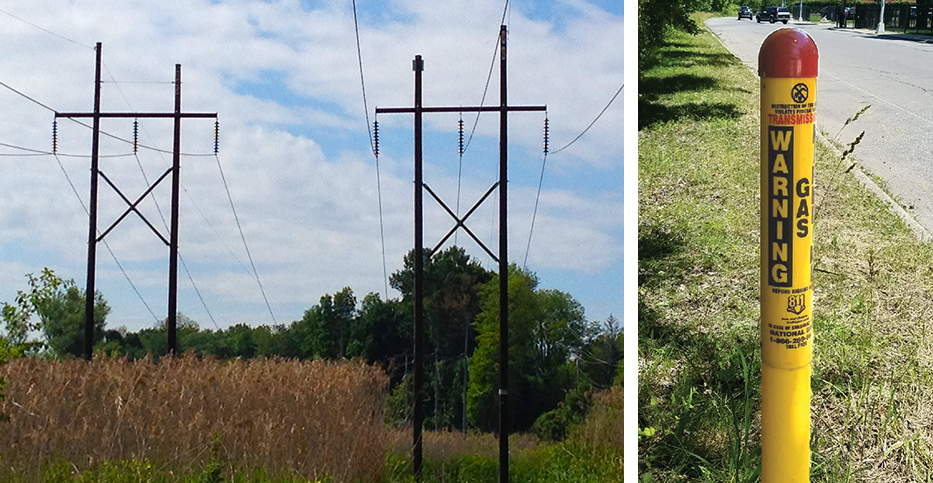| View in browser > |
 |
|
Welcome to National Grid’s Tips of the Trade for first responders. These tips are intended to help you respond safely and effectively to incidents involving natural gas and electricity. Please review them with your team.
|
|
| Help us protect National Grid rights-of-way |
| National Grid’s transmission lines transport electricity and natural gas throughout our service area and your jurisdiction. These high-voltage power lines and high-pressure natural gas pipelines are protected by rights-of-way (ROWs), corridors of land of varying dimensions along each side of the lines. |
| We always need free and clear access to our ROWs, and so do you. We need access for inspections and maintenance activities so that we can ensure the safe and reliable operation of critical energy lines. You need access to respond to any emergencies occurring in the ROW. Help us protect our access by being aware of National Grid ROWs and knowing the location of gas pipelines in your jurisdiction. |
 |
| National Grid may own the property within a right of way, or we may have purchased the rights to use the property through an easement with a landowner. |
| How you can help |
Damage to our natural gas transmission pipelines can cause dangerous gas leaks that have the potential to ignite or explode. Damage to overhead or underground transmission power lines can lead to extensive power outages, fires and electric shock injuries or deaths. You can help by being alert to unauthorized activities in the National Grid ROWs in your community. Watch for: |
| • |
 |
Construction activities or obstructions. Developers, contractors and homeowners must have permission from National Grid for construction or grading activities within a ROW easement, including erecting fences; installing drains, ditches, wells or irrigation lines; establishing vehicle crossings; changing the elevation or grade; and pile driving or drilling. All of these activities can damage buried transmission lines and may require special precautions, utility oversight and/or additional permits from municipalities. |
|
| |
 | ⚬ |
 |
If you see construction or excavation occurring near a natural gas pipeline marker or in a National Grid ROW with no utility personnel present, please call us to report it. These activities can damage buried lines and may block access for our personnel or for safety crews in the event of an emergency. |
|
| • |
 |
Trees or other vegetation planted within our ROWs. Trees can grow into power lines and/or interfere with fire safety, facility maintenance and leak detection activities. |
|
| • |
 |
Suspicious activity near a pipeline marker. If you observe unusual activity that concerns you, call the number on the marker to report it immediately. |
|
| |
|
| Our ROW locations are usually marked on maps filed with local municipalities. In addition, our natural gas pipeline ROWs are typically indicated by high-visibility markers with National Grid’s 24-hour emergency phone number. These markers are usually freestanding; in urban areas, they may also be found on utility poles. |
| You can also determine the general location of gas transmission pipelines in your area by registering with the National Pipeline Mapping System (NPMS). State and local government officials may apply for access to more specific pipeline location information on this website. |
|
| For more first responder safety information, visit firstresponder.ngridsafety.com. |
|
|
|
| |
| |
|
| To report emergencies, call 911 and National Grid immediately. |
| |
 |
| In case of gas emergencies: |
 |
Long Island and the Rockaways:
911 and 1-800-490-0045 |
 |
Metro New York:
911 and 1-718-643-4050 |
 |
Upstate New York:
911 and 1-800-892-2345 |
 |
Massachusetts:
911 and 1-800-233-5325 |
 |
Rhode Island:
911 and 1-800-640-1595 |
|
|
|
|
| |
|
|
|
| |
| |
|
 |
#13035 © 2021 Culver Media, LLC |
|
| |
|
|
|
 |
|
| |